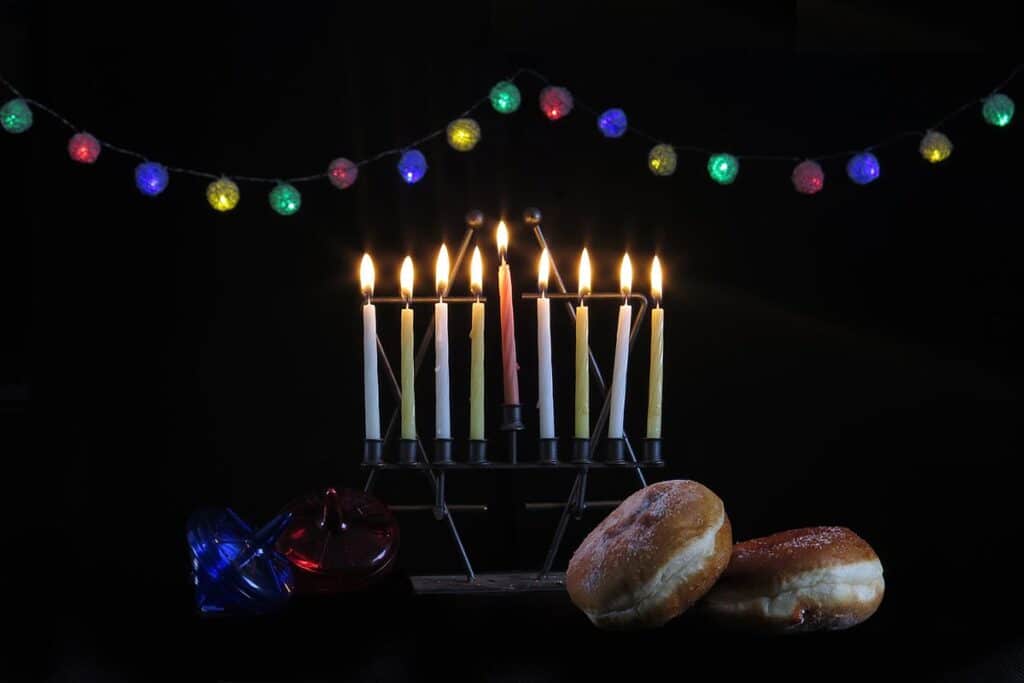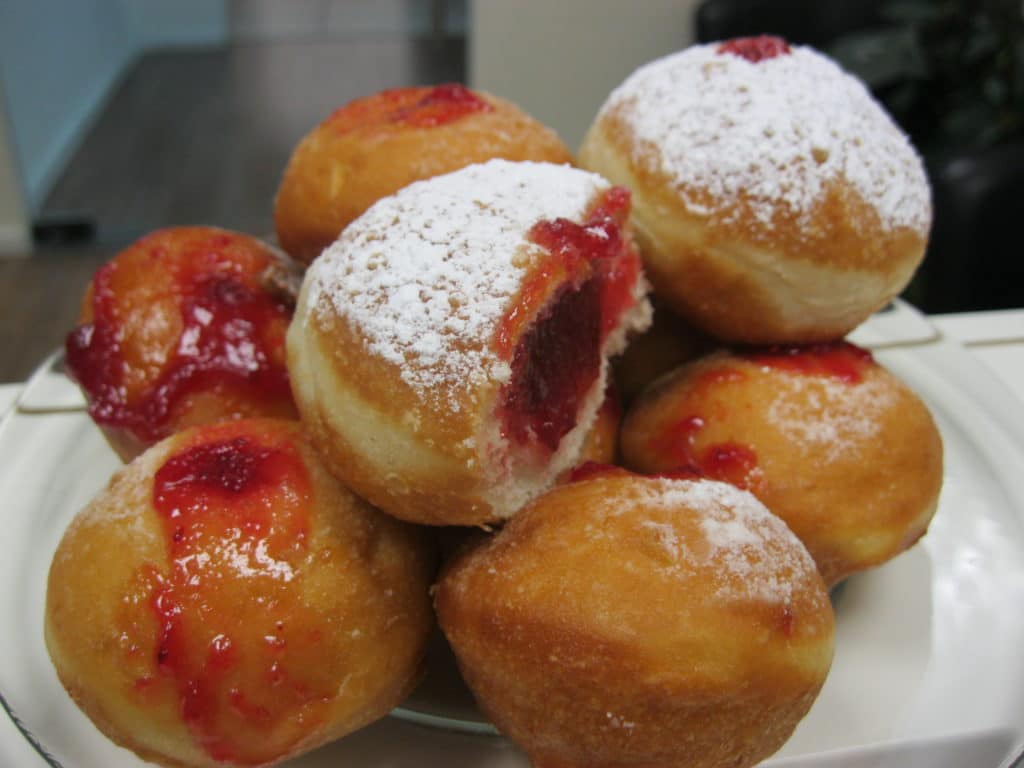
Sufganiyot are one of the most beloved Hanukkah treats — they’re fried and delicious and the flavors are endless.
Since the 12th century, Jews have had the custom of eating fried foods in commemoration of the miracle of the Hanukkah story. However, the introduction of sufganiyot as we know them today is relatively recent.

Here’s a deep (fried) dive into the history of this iconic Hanukkah treat.
Want to make sufganiyot at home? Try our recipe.
What are sufganiyot?
Sufganiyot are deep-fried doughnuts filled with jelly and sprinkled with powdered sugar, associated with Hanukkah.

The most traditional filling is strawberry jam, but over the decades, recipes have expanded to include a diverse array of options including custard, Nutella, halva, and more.
When Jews started making jelly doughnuts for Hanukkah, the method involved placing jelly between two circles of dough before frying. In the primary method used today, however, jelly is injected into an one already-fried doughnut.
The origins of sufganiyot
Although the treat itself is relatively recent addition to Hanukkah celebrations, the word “sufganiya” is derived from the Talmudic words sofgan and sfogga meaning, “spongy dough.”
These words inspired a centuries-long custom of Jews around the world eating fried dough to celebrate the Festival of Lights. According to an Israeli folk tale, God gave Adam and Eve sufganiyot as a source of comfort after their expulsion from the Garden of Eden.
The evolution of sufganiyot
The sufganiyot we enjoy today have significantly evolved from their original form. Traditionally, Hanukkah foods, including doughnuts, were more savory. Early versions of Hanukkah doughnuts were filled with ingredients like mushrooms or meat rather than sweet fillings.
This trend shifted in the 1500s when the price of sugar decreased. With this change, European Jews were inspired to create a new Hanukkah delicacy using the now-affordable sugar and fruit preserves. Fruit preserves, a popular method for extending the shelf life of fruit before refrigerators, became a key ingredient in creating the sweet jelly doughnut.
The first known jelly doughnut recipe dates back to 1485, found in a German cookbook. Initially, these desserts posed a challenge for kosher-keeping Jews as they were fried in lard. Polish Jews innovated by frying the doughnuts in schmaltz or oil, naming them ponchiks.
Ponchiks quickly became a popular Hanukkah treat in Eastern Europe. In the late 19th and early 20th centuries, as many Jews immigrated to Mandatory Palestine, they brought this early version of the sufganiya with them.
Modern sufganiyot

Although jelly doughnuts are now a staple of Hanukkah celebrations, the modern version of sufganiyot has been popular for only about 100 years.
In the 1920s, the Israeli Labor Federation, Histadrut, pushed to make them a quintessential food of Hanukkah. This move aimed to create more job opportunities for union members. As a result, commercial bakeries started selling sufganiyot well before Hanukkah, extending the time frame for employment.
The entire process — from preparing the dough to frying, filling, transporting, and selling the doughnuts in markets — generated a substantial number of jobs.
After Israeli immigrants introduced sufganyot to bakeries across the United States in the 1970s, their popularity surged. It wasn’t long before sufganiyot became a staple at American Hanukkah celebrations alongside latkes and gelt.
The options are endless
Today, sufganiyot are just about as popular as latkes as a Hanukkah treat, particularly due to a surge in their popularity over the past decade.
There are tons of recipes online for those who wish to make them at home. Both Jewish and non-Jewish bakeries stock multiple delicious flavors on the shelves.
In Israel alone, it is estimated that over 18 million sufganiyot are enjoyed each year. The IDF purchases approximately 400,000 sufganiyot annually to bring holiday cheer to soldiers serving during the holiday.

In Israel, the recent boom in popularity can be attributed to the creative rivalry among Israeli bakeries, each striving to outdo the others with innovative and elaborate fillings and toppings.
Roladin, a renowned bakery chain in Israel, has been a trailblazer in introducing inventive flavors, drawing inspiration from diverse Jewish culinary traditions.
For instance, the French-Israeli community inspired custard-filled sufganiyot, while flavors like dulce de leche have been influenced by Latin American Jewish communities. Whether you prefer traditional jelly-filled sufganiyot or enjoy experimenting with new and funky flavors, sufganiyot are a can’t-miss Hanukkah treat.
Originally Published Dec 7, 2023 07:39PM EST
